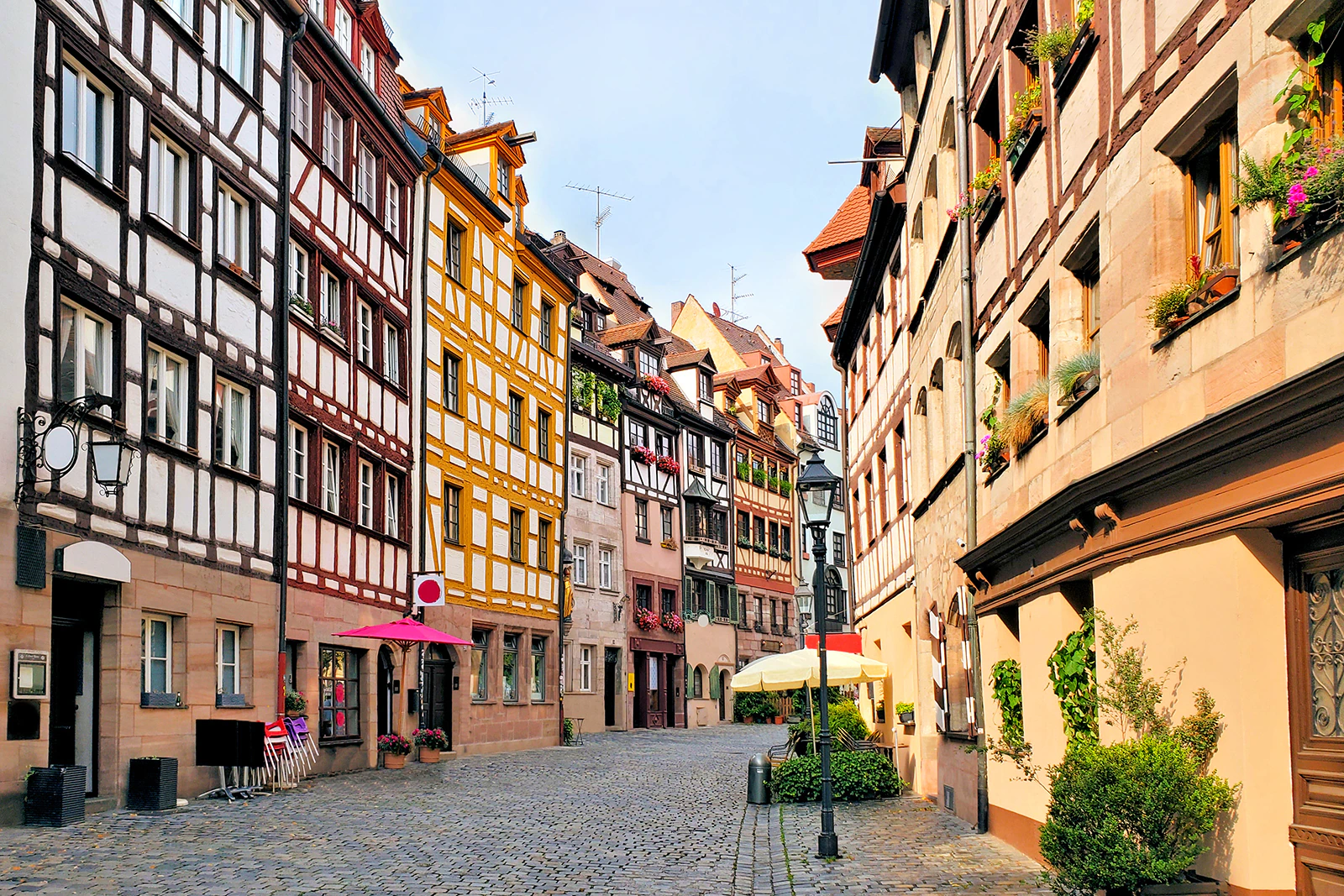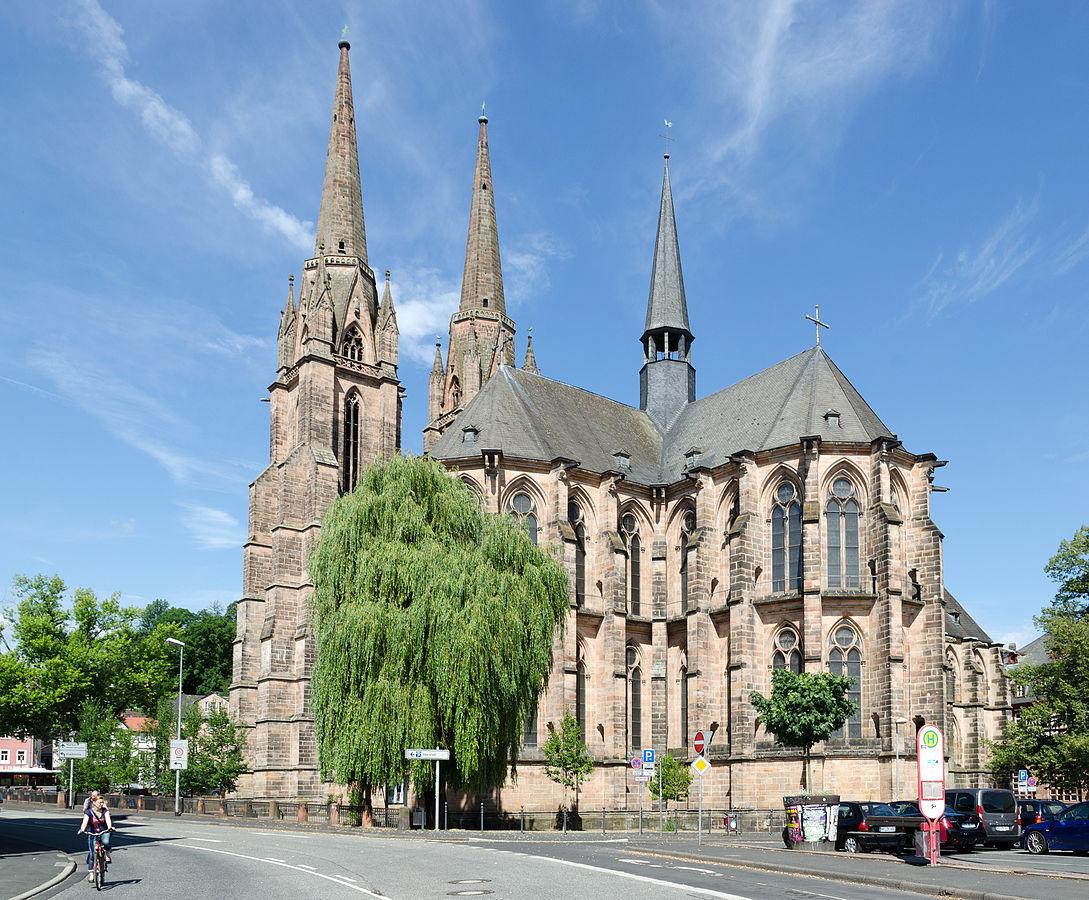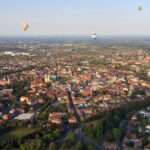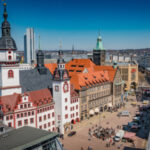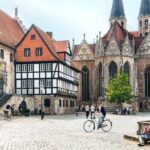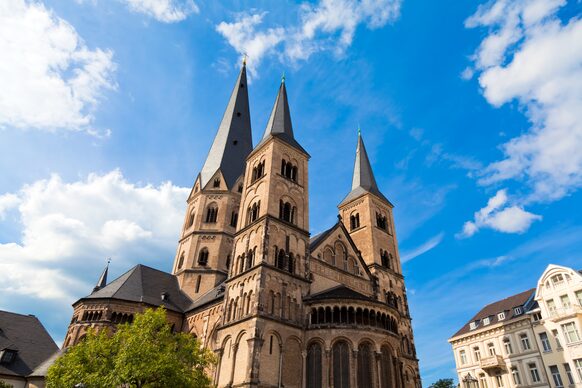From the period of the Holy Roman Empire through the 20th century, the city that serves as Franconia’s capital has witnessed significant global events. Old Town is still surrounded by walls, and the Kasierburg castle guards it on a peninsula on the north side. The castle served as home to official festivities for hundreds of years while Nuremberg served as the unofficial capital of the Holy Roman Empire. Due to the Nuremberg Rallies, discriminatory laws, and post-war trials, Nuremberg is also known as a name connected to the Nazis. A significant museum about the Nazi government is located at the Nazi Congress Hall on the rally grounds, while Hermann Göring and other Nazi leaders were prosecuted in Courtroom 600 at the Palace of Justice.
Take a Walking Tour of Nuremberg Castle
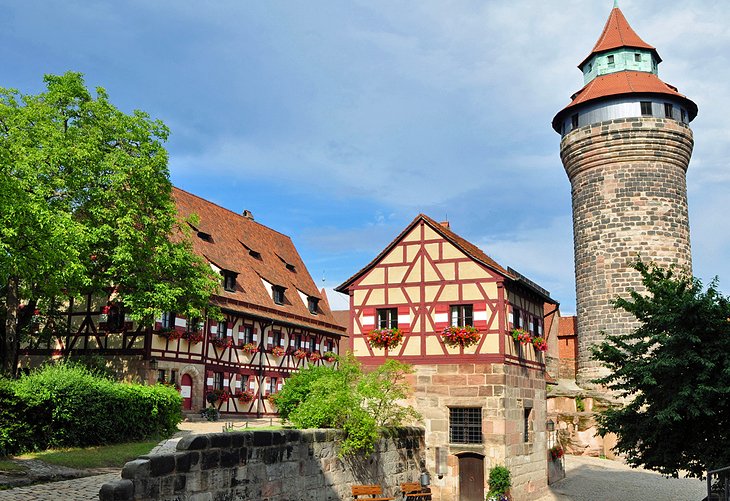
Image Source: https://www.viator.com/Nuremberg/d5628-ttd/p-5992WALK?eap=planetware-tours-14254&aid=vba14254en
Dominating the skyline of the northwestern section of the Old Town (Altstadt) rises the cluster of historic structures that together comprise Nuremberg Castle, the Imperial Castle of Nuremberg (Nürnberger Burg), to give its full name. This impressive 351-meter-tall fortification is considered to be one of the most important surviving medieval fortresses in all of Europe and was the residence of all legitimate German kings and emperors from 1050 to 1571.
Get Your Bearings at the Hauptmarkt
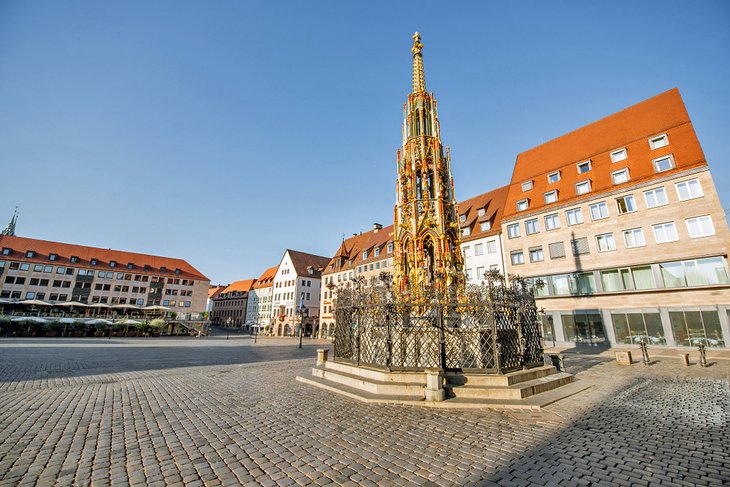
Image Source: https://www.planetware.com/tourist-attractions-/nuremberg-d-ba-nr.htm
After your walking tour of Nuremberg Castle, spend time exploring the city’s Hauptmarkt, or “Main Market.” For centuries the scene of a daily market – the Wochenmarkt is a tradition that continues to this day – the Hauptmarkt is the traditional city center and is home to the aptly named 14th-century “Beautiful Fountain.” With its ornate decorations and figures it makes for a picture-perfect selfie spot (be sure to touch the fountain’s famous gold ring for a spot of good luck).
Walk the Historic City Walls
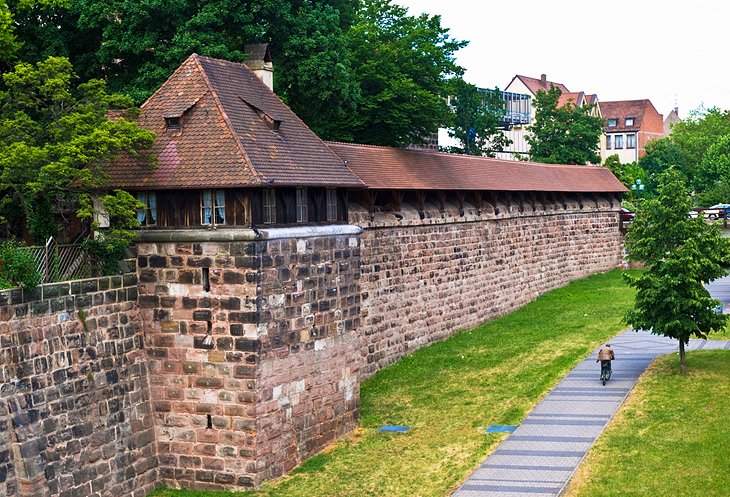
Image Source: https://museums.nuernberg.de/medieval-dungeons/
Nuremberg has the unique distinction of having preserved most of its circuit of old city walls, many sections of which date from the 14th to 15th centuries and were later strengthened in the 16th and 17th centuries. In fact, one of the best things to do in Nuremberg for those wanting to find their way about this fascinating medieval city is to walk the nearly five kilometers of paths that follow the walls, leading you to numerous gates and towers, many of which can be explored.
Learn Your History at the Germanic National Museum
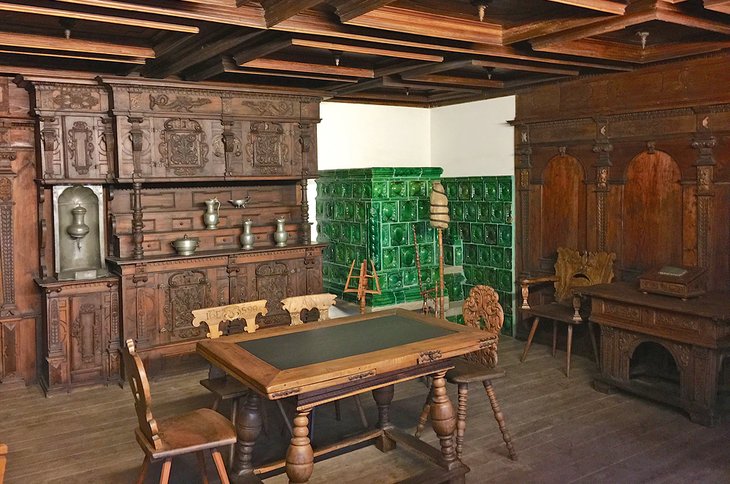
Image Source: https://www.gnm.de/your-museum-in-nuremberg/
The Germanic National Museum (Germanisches Nationalmuseum) is home to the country’s largest collection related to German art and culture. The museum has more than 1.3 million items relating to the region’s artistic and cultural history, including historical documents on parchment, a collection of 17,000 seals, and a superb fine arts archive.
Take a Tour of the Nuremberg Transport Museum
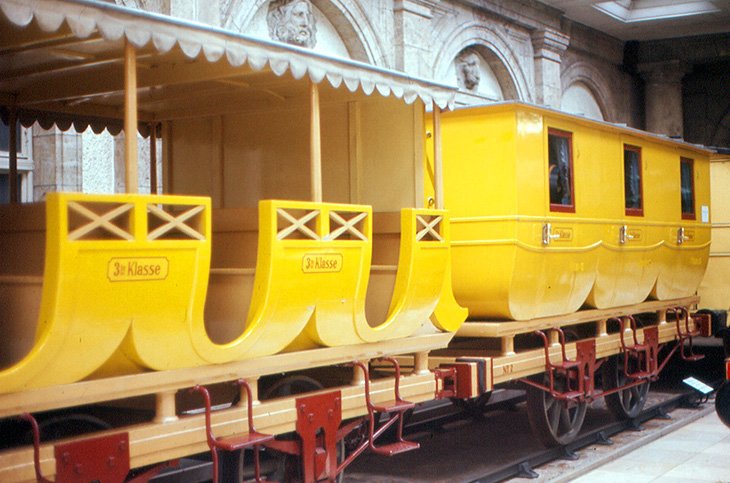
Image Source:https://www.dbmuseum.de/museum_en
Just outside the old town walls is the superb Nuremberg Transport Museum (Verkehrsmuseum Nürnberg). Consisting of a number of museums, including Deutsche Bahn’s (the country’s railway) DB Museum and the Museum of Communications, it’s a wonderful attraction to explore with kids due to its many displays relating to the country’s railroads.
Marvel at the Architecture of St. Lawrence’s Church (St. Lorenz)
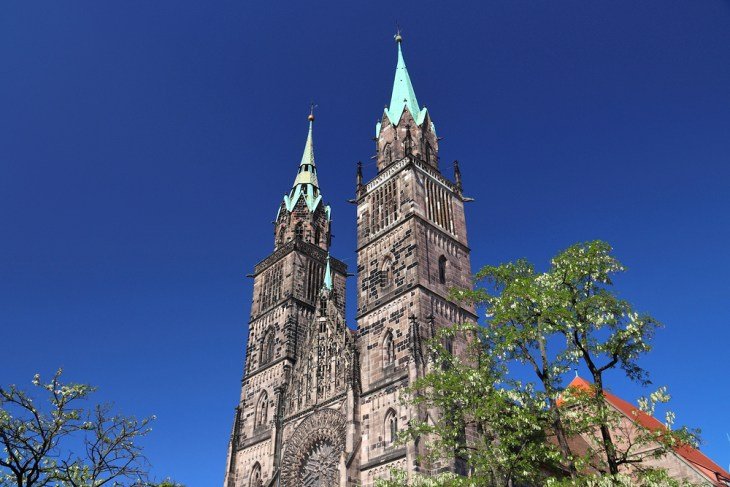
Image Source: https://www.planetware.com/tourist-attractions-/nuremberg-d-ba-nr.htm
Overlooking Lorenzer Platz, the spectacular twin-towered 14th-century Gothic church of St. Lawrence (St. Lorenz, or Lorenzkirche) is the city’s largest church. One of its many notable features is a large rose window, nine meters in diameter, situated above the beautiful west doorway.
Frauenkirche: The Church of Our Lady
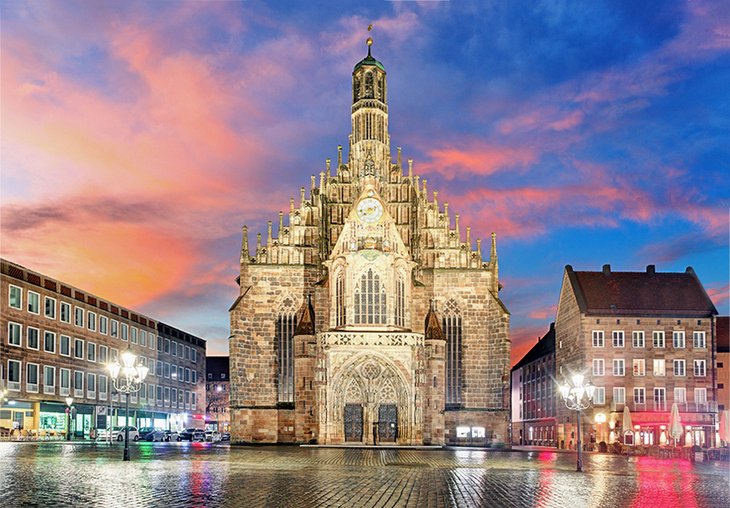
Image Source: https://www.planetware.com/tourist-attractions-/nuremberg-d-ba-nr.htm
The Roman Catholic Frauenkirche (Church of Our Lady) dates back to 1352 and is a must-see Gothic landmark. You won’t easily miss it when visiting Nuremberg’s Hauptmarkt, as the building’s stunning facade is rich with detail. For example, above the porch with its rich sculptural decoration is the Männleinlaufen, a beautiful old clock that was installed in 1506 with mechanical figures representing the seven Electors pacing round Emperor Charles IV (performances daily at noon).
St. Sebaldus Church
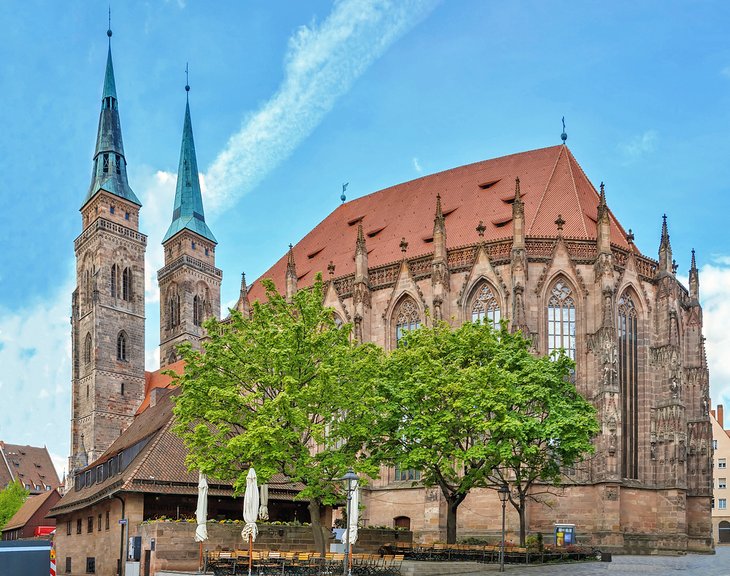
Image Source: https://www.planetware.com/tourist-attractions-/nuremberg-d-ba-nr.htm
Protestant St. Sebaldus Church (Sebalduskirche), built from 1225-73, boasts a magnificent Gothic east choir dating from 1379 featuring the Schreyer-Landauer tomb, the work of Adam Kraft. Inside, on a pillar in the north aisle, is the Madonna in an Aureole dating from 1420, while in the east choir is the famous tomb of St. Sebaldus from 1508, a masterpiece in bronze by Peter Vischer and his sons.
Meet the Artist: Albrecht Dürer’s House
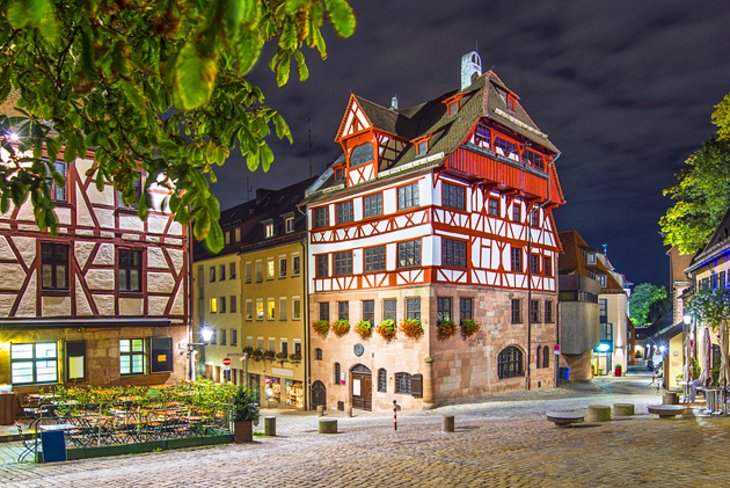
Image Source: https://museums.nuernberg.de/home/museenb3/www.museen.nuernberg.de/albrecht-duerer-house/
Just a stone’s throw from Nuremberg Castle is the 15th-century Albrecht Dürer’s House (Albrecht-Dürer-Haus). It was here the famous German Renaissance artist lived from 1509 until his death in 1528. The five-story house itself dates back to 1420 and now serves as a museum, founded in 1871 and dedicated to Dürer’s life and work (he was especially famous for his printed maps).
Documentation Center Nazi Party Rally Grounds
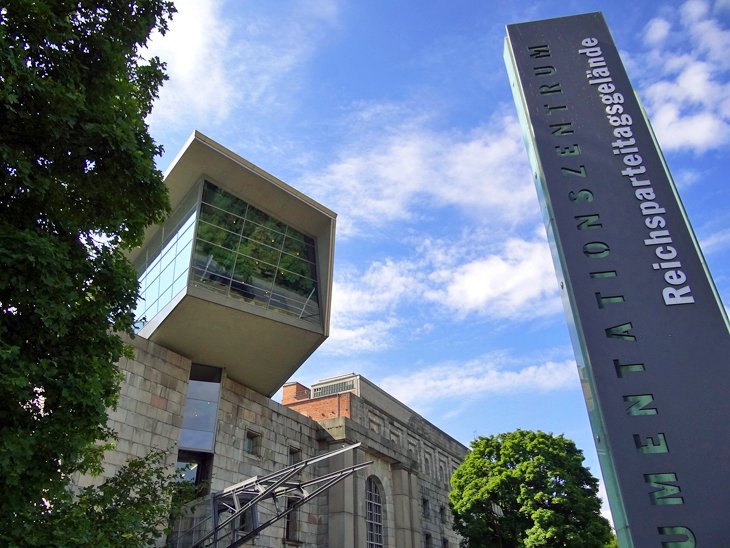
Image Source: https://museums.nuernberg.de/documentation-center/
The Documentation Center Nazi Party Rally Grounds (Dokumentationszentrum Reichsparteitagsgelände) is one of Germany’s most important museums, dedicated to the bleakest chapters in the country’s history. Located in a wing of the Congress Hall where Nazi Party rallies were held, its most notable exhibit is called Fascination and Terror and deals with many facets of the Nazi regime’s brutal time in power.
Explore Königstrasse and the St. Lawrence Side
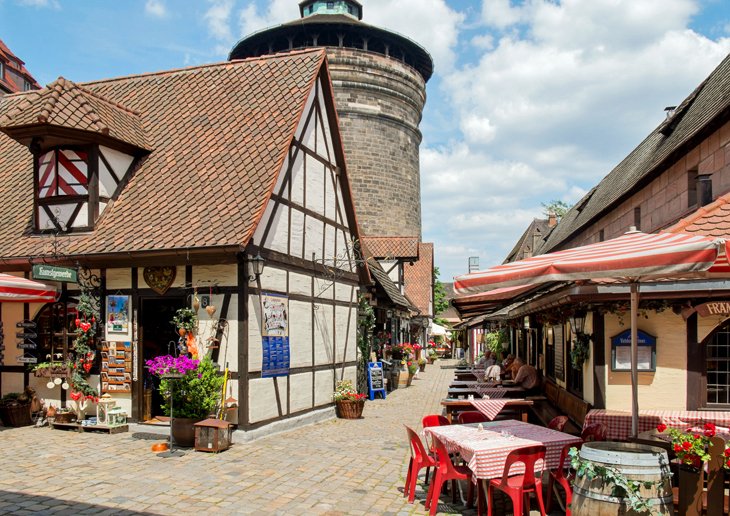
Image Source: https://www.planetware.com/tourist-attractions-/nuremberg-d-ba-nr.htm
Nuremberg’s St. Lawrence Side, or Lorenzer Seite – named after its principal church, St. Lorenz – lies in the section of the Old Town (Altstadt) that’s located on the south bank of the river Pegnitz. One of the busiest parts of the city, it’s worth exploring for its famous Frauentorturm and Handwerkerhof Alt Nürnberg districts, two small enclaves of wonderful, old half-timbered houses renowned for their traditional craft workshops.
For the Kids: The Toy Museum
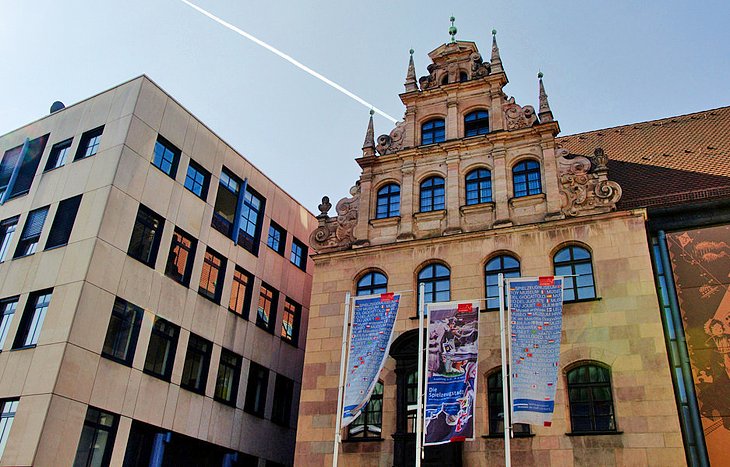
Image Source: https://museums.nuernberg.de/home/museenb3/www.museen.nuernberg.de/toy-museum/
Nuremberg’s excellent Toy Museum (Spielzeugmuseum), widely regarded as the leading museum of its kind in the world, is a fun attraction for kids of all ages – and adults. It’s located in a historic old home dating from 1517. Highlights of a visit include fascinating details of the cultural significance of the many unique toys on display from different countries and periods.
Go Wild at Nuremberg Zoo

Image Source: https://tiergarten.nuernberg.de/en/home.html
Another fun thing to do for those traveling with kids is to pay a visit to the Nuremberg Zoo (Tiergarten Nürnberg). Home to more than 2,000 animals from some 300 or so different species, this world-class attraction was opened in 1912 but can trace its roots back to medieval times, when exotic animals from around the world were kept for entertainment by local aristocracy.
Neues Museum Nürnberg
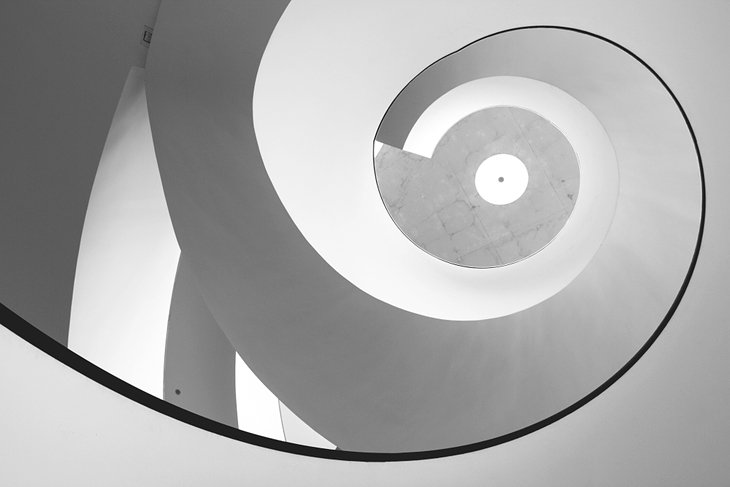
Image Source: https://www.nmn.de/en/home-1.htm
For art lovers, the excellent Neues Museum Nürnberg is a must-visit for its large and impressive collection of modern and contemporary art. Located in a very stylish building, this world-class museum opened in 2000 and is in fact something of a work of art itself, boasting bright open spaces, clean lines, and interesting architectural features such as its exquisite spiral staircase.
City Museum at Fembo House
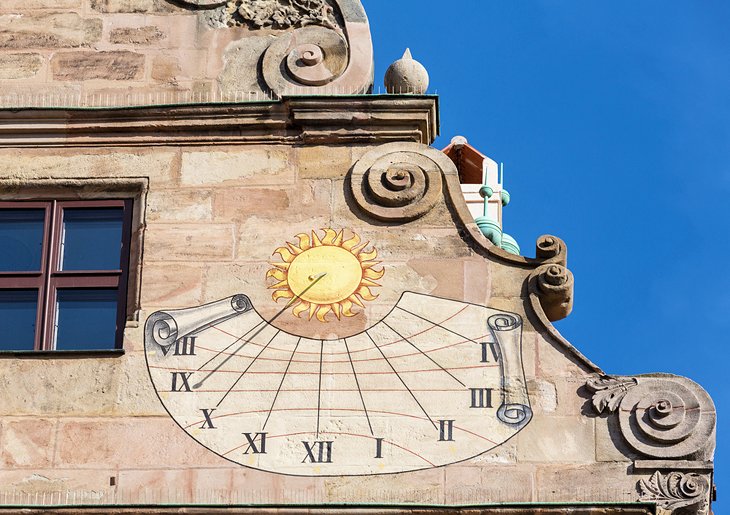
Image Source: https://museums.nuernberg.de/city-museum-fembo-house/
After spending time exploring beautiful Nuremberg (or possibly even before you venture too far), you’ll no doubt want to know more about the city’s rise to prominence over the years and how it came to be home to so many important historic attractions. If so, be sure to make time for a visit to the superb City Museum at Fembo House (Stadtmuseum im Fembo-Haus).
Places and Things To Do

